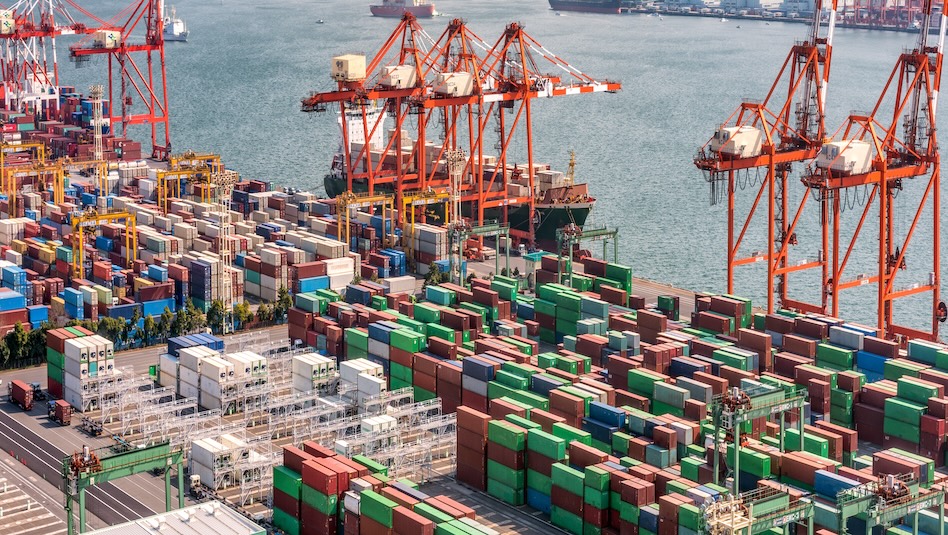Country: India
Access this content:
If you are an existing investor, log in first to your Metrobank Wealth Manager account.
If you wish to start your wealth journey with us, click the “How To Sign Up” button.

Fundamental View
AS OF 19 Nov 2025State Bank of India (SBI) is the largest state-owned bank in India and is in some respects the country’s flagship bank. Given the bank’s ~55% government ownership and systemic importance, government support for SBI is very strong.
The bank’s capital buffers are relatively low, but we take comfort in the strong government support.
Business Description
AS OF 19 Nov 2025- State Bank of India is the largest commercial bank in India. Its predecessor banks date back to the 19th century. In the early 20th century, they merged to form the Imperial Bank of India, which became the State Bank of India after India gained independence in 1947.
- The Government of India remains the largest shareholder with a 55.03% stake. Per the SBI Act, the government's shareholding cannot fall below 55%.
- SBI's merged with its 5 associate banks and Bharatiya Mahila Bank in 2018. The merger catapulted SBI into one of the world's 50 largest banks.
- The bank has 85% of its loans in the domestic market, and has steadily increased its international business too over the past few years with offices across all international business centres. The domestic book is split 43% retail, 33% corporates, ~14% SMEs and ~10% to the agri segment as of September 2025.
- It has diversified its operations with well regarded subsidiaries in the areas of fund management, credit cards, insurance, and capital markets.
Risk & Catalysts
AS OF 19 Nov 2025SBI does not have a strong buffer vs. the regulatory minimum of 8%, but its size, systemic importance and majority government shareholding confer particularly strong government support. But consequentially, any deterioration in the sovereign ratings will also affect the bank’s credit.
RBI repo rate cuts will impact the NIM in FY26-27, with another 25 bp reduction on the table in December. System loan growth has been slow despite improved system liquidity, but picked up in F2Q26. Momentum should sustain into F2H26 given GST rate cuts and the 3Q festive season. A sustained pickup in private sector capex though hinges on consumption strength enduring beyond the festive period.
We are cautious about pockets of stress in Indian retail, particularly unsecured retail and microfinance. Asset quality however is trending well as SBI’s personal unsecured loans book is ~95% to salaried employees of top tier corporates and the government.
Key Metric
AS OF 19 Nov 2025| INR mn | FY22 | FY23 | FY24 | FY25 | 1H26 |
|---|---|---|---|---|---|
| NIM | 3.12% | 3.37% | 3.28% | 3.09% | 2.93% |
| ROAA | 0.67% | 0.96% | 1.04% | 1.10% | 1.15% |
| ROAE | 11.9% | 16.5% | 17.3% | 17.3% | 16.4% |
| Equity to Assets | 5.6% | 5.9% | 6.1% | 6.6% | 7.4% |
| CET1 Ratio | 10.3% | 10.6% | 10.6% | 11.1% | 11.7% |
| Gross NPA Ratio | 3.97% | 2.78% | 2.24% | 1.82% | 1.73% |
| Provisions/Loans | 0.91% | 0.54% | 0.14% | 0.38% | 0.47% |
| PPP ROA | 1.58% | 1.59% | 1.60% | 1.72% | 1.69% |
CreditSight View Comment
AS OF 05 Nov 2025SBI is India’s largest bank and a well-run franchise. Government support (55% shareholding, can’t drop below 51%) underpins SBI’s relative positioning, while fundamentally, it has good operating metrics and business plans, a comfortable LDR, sufficient CET1 ratio (recently boosted by an equity raise in Jul-25), and the best management among the public sector banks. India’s macro backdrop remains relatively robust and SBI’s lower risk personal unsecured loans clientele is supporting asset quality well. Lower rates should keep asset quality well-supported. Rate cuts will feed through to the NIM in FY26, but treasury gains have provided some offset. Loan growth has been off to a slow start for the sector but is picking up. We like the name, but have it on M/P as it trades fair.
Recommendation Reviewed: November 05, 2025
Recommendation Changed: April 25, 2025
Featured Issuers
Bank of Philippine Islands

SK Hynix

Hyundai Motor



How may we help you?
Search topics about wealth insights and investments.Access this content:
If you are an existing investor, log in first to your Metrobank Wealth Manager account.
If you wish to start your wealth journey with us, click the “How To Sign Up” button.

Fundamental View
AS OF 04 Nov 2025We are comfortable with Reliance’s large diversified scale of operations and dominant presence in various key sectors (refining, petrochemicals, retail and telecom), which allows for earnings resilience.
We believe a lackluster oils-to-chemicals outlook is well mitigated by strong outlooks for telecom and retail.
Plans to ramp up its renewable energy business could provide the next leg of growth and improve ESG perception.
Reliance incurs significant capex that has weighed on free cash flow generation, though we acknowledge its historically prudent financial management and robust credit metrics that provide ample elbowroom for some credit profile deterioration.
Business Description
AS OF 04 Nov 2025- RIL is an Indian diversified conglomerate engaged in oil & gas refining, marketing, petrochemicals, organized retail, telecom and digital services, amongst others. It is the largest company in India by revenue, profits, exports and market capitalization (INR 20 tn).
- It is the second largest refiner in India and produces petroleum products such as petrol, high-speed diesel (HSD), aviation turbine fuel (ATF), LPG and lubricants.
- It is the largest petrochemicals producer in India, boasting production of ~38 mn tons in FY20. Through its integrated Jamnagar refinery complex, it produces Polymers/Plastics, Elastomers (synthetic rubber) and Polyester products.
- It is the largest retailer in India in terms of revenue. It operates 18.8k stores (as of March 2024) to sell products ranging from consumer electronics, fashion and lifestyle, grocery, petrol retail and telecom and digital services. It launched its online retail channel, 'JioMart', in December 2019.
- Reliance Jio is the largest mobile telecom operator by subscriber base (482 mn as of March 2024) in India and boasts the widest 4G wireless network in the country.
- In 2021, RIL announced investments to the tune of INR 750 bn/ $10 bn (for next 3 years) to build a renewable energy ecosystem which will include 4 giga factories. Set to be located in Gujarat, the factories will produce solar modules, hydrogen, fuel cells and battery grid to store electricity. Long-term goals also include building 100 GW of PV solar plants by 2030.
Risk & Catalysts
AS OF 04 Nov 2025Reliance’s O2C (oil-to chemicals) margins remain under pressure from global tariff-led growth slowdown concerns and persisting oversupply conditions in China.
Reliance incurs significant capex at historically high levels, particularly from continued investments into its O2C, retail, and nascent renewables businesses. This has weighed on its free cash flow generation, though we take comfort in Reliance’s historically prudent financial management and robust credit metrics.
Reliance faces key-person risk; 65-year old Chairman Mukesh Ambani has begun to hand over the reins of the company’s different business divisions to his children.
Key Metric
AS OF 04 Nov 2025| INR bn | FY23 | FY24 | FY25 | F1H25 | F1H26 |
|---|---|---|---|---|---|
| Debt to Book Cap | 35.3% | 33.1% | 31.9% | 32.7% | 31.2% |
| Net Debt to Book Cap | 29.9% | 26.1% | 24.8% | 26.4% | 23.9% |
| Debt/Total Equity | 54.5% | 49.6% | 46.9% | 48.6% | 45.4% |
| Debt/Total Assets | 28.1% | 26.1% | 24.3% | 25.6% | 23.4% |
| Gross Leverage | 3.2x | 2.8x | 2.9x | 2.9x | 2.7x |
| Net Leverage | 2.7x | 2.2x | 2.2x | 2.3x | 2.1x |
| Interest Coverage | 5.0x | 7.0x | 6.8x | 6.9x | 6.7x |
| EBITDA Margin | 15.9% | 17.7% | 16.9% | 16.5% | 17.5% |
CreditSight View Comment
AS OF 04 Nov 2025We have a Market perform recommendation on Reliance (RIL); we prefer its 2032 and would avoid its 2045 and 2052. We see room for RIL 2032 to tighten 10-15 bp versus Bharti 2031 and PTTGC 2032. We like RIL’s large diversified operations and dominant market shares in key sectors (refining, retail and telecom) that boosts earnings resilience. Its growing renewable business could aid ESG investor sentiment too. While we acknowledge persisting weakness in the O2C segment and RIL’s elevated capex needs, we think the impact is mitigated by RIL’s prudent financial management and healthy credit metrics that provide ample elbowroom for some credit profile deterioration. While key man risk remains a concern, we take comfort in gradually progressing succession plans.
Recommendation Reviewed: November 04, 2025
Recommendation Changed: June 30, 2021
Featured Issuers
Bank of Philippine Islands

SK Hynix

Hyundai Motor










 DOWNLOAD
DOWNLOAD



